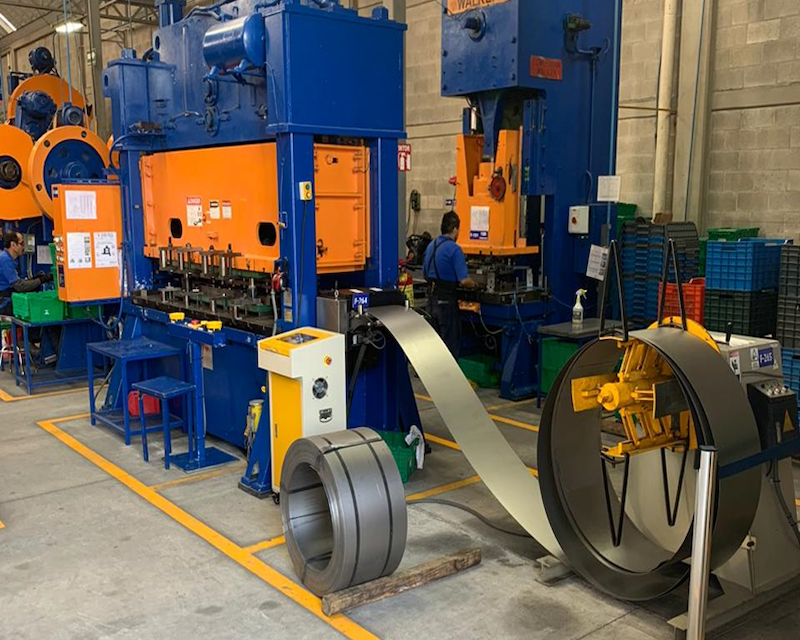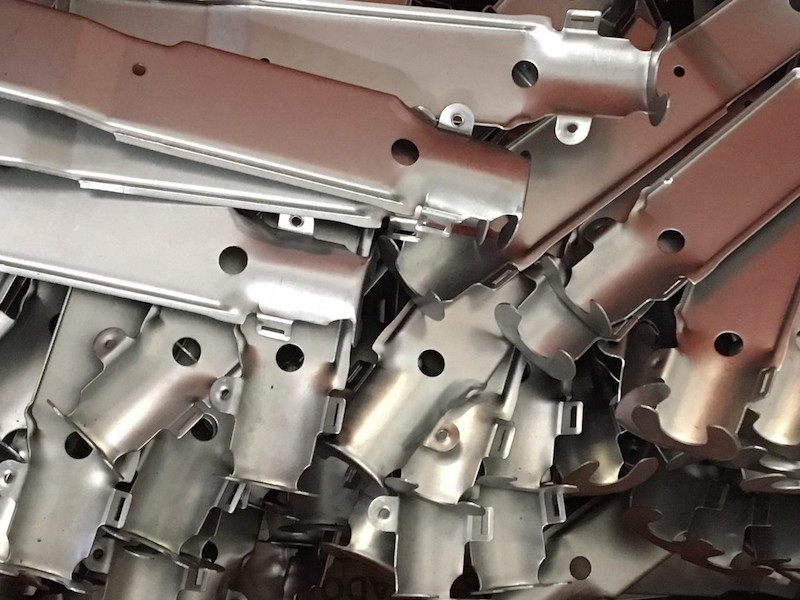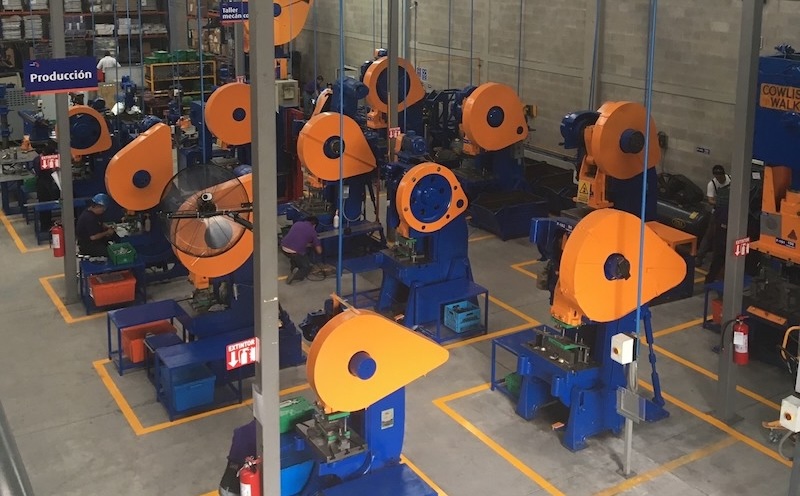What’s The Best Raw Material For Sheet Metal Stamping?
Sheet metal stamping is a versatile and widely used manufacturing process that transforms flat metal sheets into complex shapes. In the automotive industry, the most common parts produced from sheet metal stamping include:
- Body panels
- Most brackets, hinges, or bolt-on parts
- Seat rails
- Seat belt buckles and latches
- Battery cable connectors
- ECU housings
- Brake backing plates
- Radiators
- Engine oil pans
- Catalytic converter housings
- Bumper reinforcement bars
The choice of raw material is important in determining the best method for sheet metal stamping and the final product’s quality. Many types of materials can be used for sheet metal stamping, but the best raw material in terms of quality is stainless steel.
In this blog post, we’ll explore the considerations and factors that make stainless steel the best raw material for sheet metal stamping.
Why Stainless Steel Shines in Sheet Metal Stamping

Stainless steel stands out as the preferred raw material for sheet metal stamping for the following reasons:
Durability And Strength
Stainless steel boasts exceptional durability and strength, making it well-suited for applications where the stamped component needs to withstand mechanical stress, load, and wear. Its inherent toughness ensures longevity, reducing the likelihood of premature failure.
Corrosion Resistance
One of the hallmark features of stainless steel is its remarkable resistance to corrosion and oxidation. This property makes it ideal for products exposed to moisture, chemicals, or harsh environmental conditions, ensuring a longer service life.
Formability And Precision
Stainless steel exhibits excellent formability, enabling intricate shapes and designs to be achieved through the stamping process. This formability, combined with its ability to maintain tight tolerances, makes stainless steel a go-to option for producing complex components with precision.
Heat And Temperature Resistance
Stainless steel can withstand high temperatures without losing its structural integrity. This property is invaluable for applications involving significant heat exposure, such as automotive exhaust systems or industrial equipment.
Aesthetic Appeal and Finish
Stainless steel’s polished surface and lustrous finish contribute to the aesthetic appeal of the final product. This is particularly important for consumer products, architectural components, and items where visual appeal matters. And, because stainless steel needs no additional finishing, cost and process time can be saved.
Recyclability and Sustainability
Stainless steel is a recyclable material, aligning with sustainability goals and reducing the environmental impact of manufacturing processes. Its recyclability ensures that discarded components can be repurposed, contributing to a circular economy.
Factors to Consider

While stainless steel offers numerous advantages, it’s essential to consider the following factors when choosing the grade of stainless steel for sheet metal stamping:
Material Grade
Different grades of stainless steel offer varying levels of corrosion resistance, strength, and formability. Selecting the appropriate grade based on the intended application is crucial.
Thickness
The thickness of the stainless steel sheet influences its formability and mechanical properties. Thinner sheets may be more suitable for intricate designs, while thicker sheets provide added strength.
Surface Finish
The desired surface finish of the stamped component, whether it’s a mirror-like polish or a textured matte finish, should be considered when choosing a stainless steel grade.
Intran Offers A Variety Of Sheet Metal Stamping Solutions

Intran’s goal is to provide turnkey solutions for all your sheet metal stamping needs. We offer a variety of manufacturing capabilities. Established in 1969, we have 50 plus years of experience in making parts for automotive OEMs and aftermarket manufacturers.
Contact us to learn more about the specific materials we use and with any additional questions about tube bending using hydroforming, CNC, or bellows methods. We are committed to supplying products, processes, and services that comply with our customers’ specifications.
